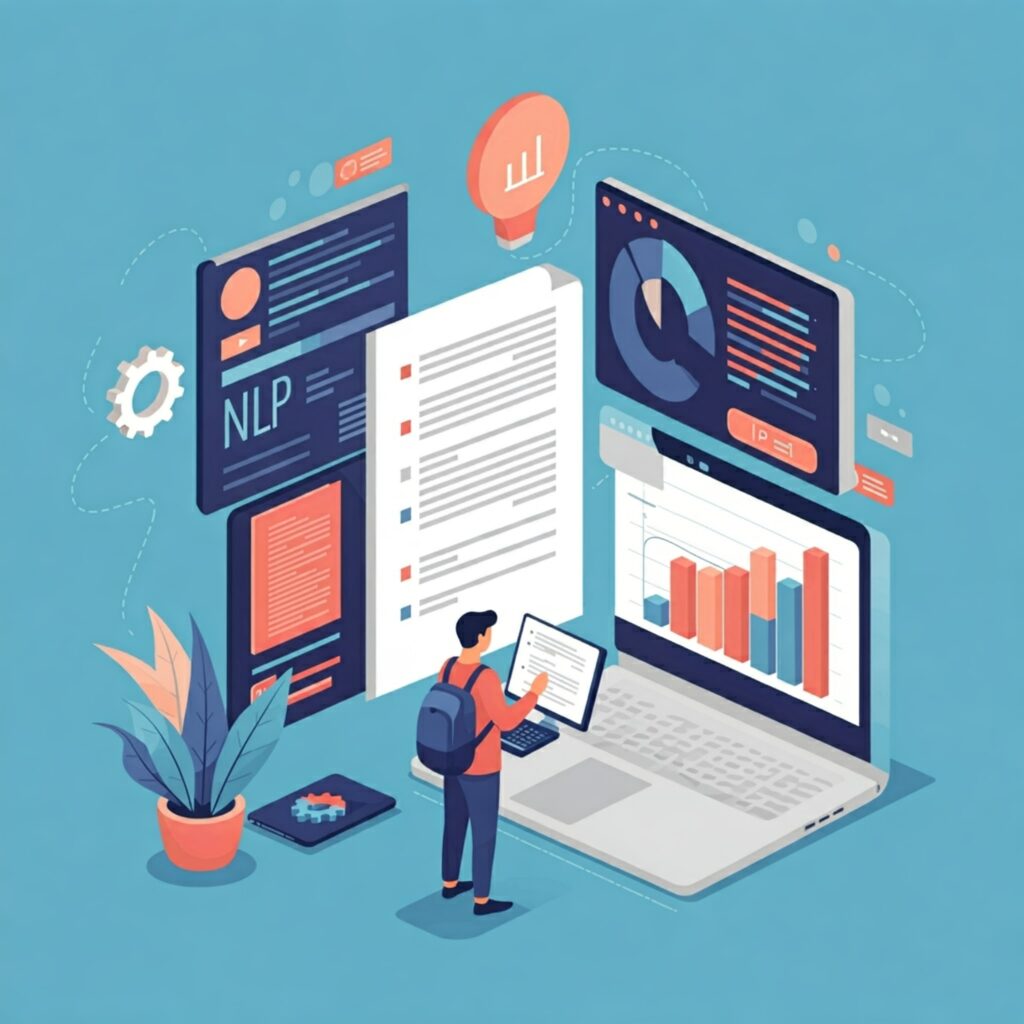Natural Language Processing Techniques for Text Analysis
Natural language processing (NLP) is a branch of artificial intelligence (AI) that focuses on enabling computers to understand, interpret, and generate human language. NLP techniques are increasingly used for text analysis, allowing organizations to extract valuable insights from unstructured text data, such as customer reviews, social media posts, and news articles. This article delves into the key natural language processing techniques for text analysis, exploring their applications and benefits.
What is Text Analysis?
Text analysis involves the process of extracting meaningful information and insights from text data. It encompasses various techniques to transform unstructured text into structured data that can be analyzed and interpreted. NLP plays a crucial role in text analysis by providing the tools and algorithms to process and understand human language.
Key NLP Techniques for Text Analysis
1. Tokenization
Tokenization is the process of breaking down text into individual words or units, called tokens. This is a fundamental step in NLP, as it allows computers to work with individual components of text.
Example:
- Text: “The quick brown fox jumps over the lazy dog.”
- Tokens: [“The”, “quick”, “brown”, “fox”, “jumps”, “over”, “the”, “lazy”, “dog”]
2. Stop Word Removal
Stop words are common words, such as “the,” “a,” “is,” and “and,” that do not carry much meaning in text analysis. Removing stop words can reduce the size of the data and improve processing efficiency.
Example:
- Text: “The quick brown fox jumps over the lazy dog.”
- After Stop Word Removal: [“quick”, “brown”, “fox”, “jumps”, “lazy”, “dog”]
3. Stemming and Lemmatization
Stemming and lemmatization are techniques used to reduce words to their base or root form. This helps to standardize words and improve the accuracy of text analysis.
Example:
- Stemming: “running” -> “run”
- Lemmatization: “better” -> “good”
4. Part-of-Speech (POS) Tagging
POS tagging involves assigning grammatical tags to each word in a text, such as noun, verb, adjective, and adverb. This helps to understand the grammatical structure of the text and the relationships between words.
Example:
- Text: “The quick brown fox jumps over the lazy dog.”
- POS Tags: [“DET”, “ADJ”, “ADJ”, “NOUN”, “VERB”, “ADP”, “DET”, “ADJ”, “NOUN”]
5. Named Entity Recognition (NER)
NER involves identifying and classifying named entities in text, such as people, organizations, locations, and dates. This is useful for extracting key information from text and understanding its context.
Example:
- Text: “Barack Obama visited London in 2011.”
- Named Entities: [“Barack Obama” (Person), “London” (Location), “2011” (Date)]
6. Sentiment Analysis
Sentiment analysis involves determining the emotional tone or sentiment expressed in text, such as positive, negative, or neutral. This is useful for understanding customer opinions, brand perception, and public sentiment.
Example:
- Text: “I love this product! It’s amazing.”
- Sentiment: Positive
7. Topic Modeling
Topic modeling is a technique used to discover topics or themes within a collection of documents. This is useful for organizing and understanding large amounts of text data.
Example:
- Documents: A collection of news articles.
- Topics: Politics, sports, entertainment, technology, etc.
8. Text Summarization
Text summarization involves creating a concise summary of a longer text, capturing its key information and main points. This is useful for quickly understanding the gist of a document.
Example:
- Text: A long news article.
- Summary: A short paragraph summarizing the main points of the article.
9. Machine Translation
Machine translation involves using computers to translate text from one language to another. This is useful for breaking down language barriers and facilitating communication across different cultures.
Example:
- Text: “Hello, world!” (English)
- Translation: “Hola, mundo!” (Spanish)
Applications of NLP for Text Analysis
- Customer Service: Analyzing customer feedback, reviews, and support tickets to understand customer sentiment and improve service quality.
- Marketing and Sales: Analyzing social media posts, product reviews, and market research to understand customer preferences and tailor marketing campaigns.
- Healthcare: Analyzing medical records, clinical trial data, and patient feedback to improve healthcare outcomes and research.
- Finance: Analyzing financial news, market data, and earnings reports to make informed investment decisions.
- Legal: Analyzing legal documents, contracts, and case law to support legal research and decision-making.
Benefits of Using NLP for Text Analysis
- Automation: NLP techniques automate the process of text analysis, saving time and resources.
- Scalability: NLP can handle large volumes of text data, making it suitable for analyzing big data sets.
- Objectivity: NLP algorithms analyze text objectively, eliminating human bias and subjectivity.
- Insights: NLP extracts valuable insights from text data that might otherwise go unnoticed.
- Improved Decision-Making: NLP provides data-driven insights that can inform better decision-making.
Conclusion
Natural language processing techniques are transforming the way organizations analyze and understand text data. By automating the process of extracting insights from unstructured text, NLP empowers businesses to gain a deeper understanding of their customers, markets, and operations. As NLP technology continues to evolve, we can expect to see even more innovative applications and benefits in the years to come.
What are your thoughts on the future of NLP for text analysis? Share your insights in the comments below!
